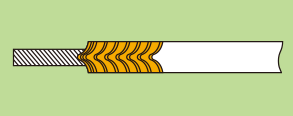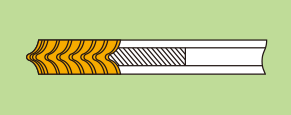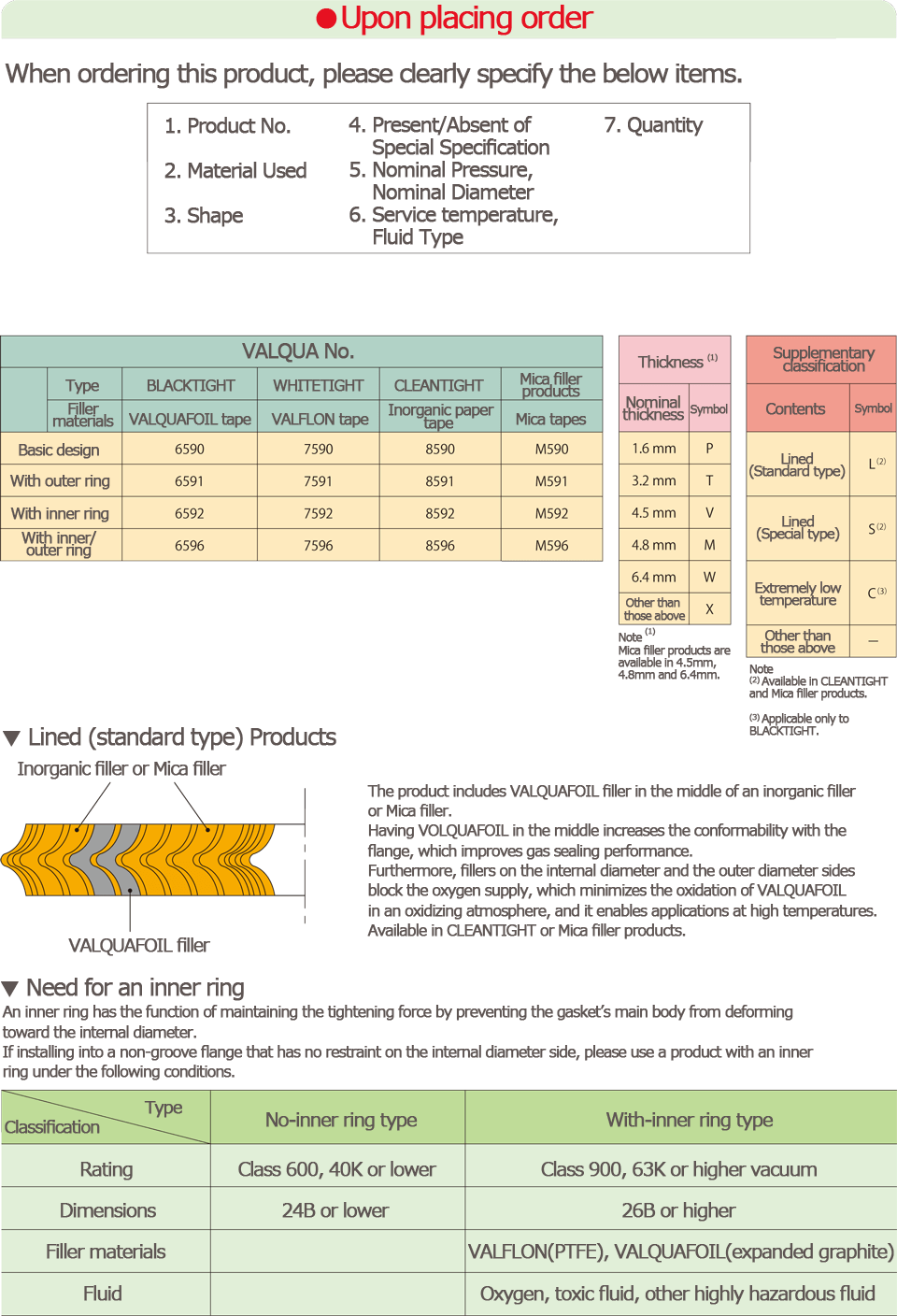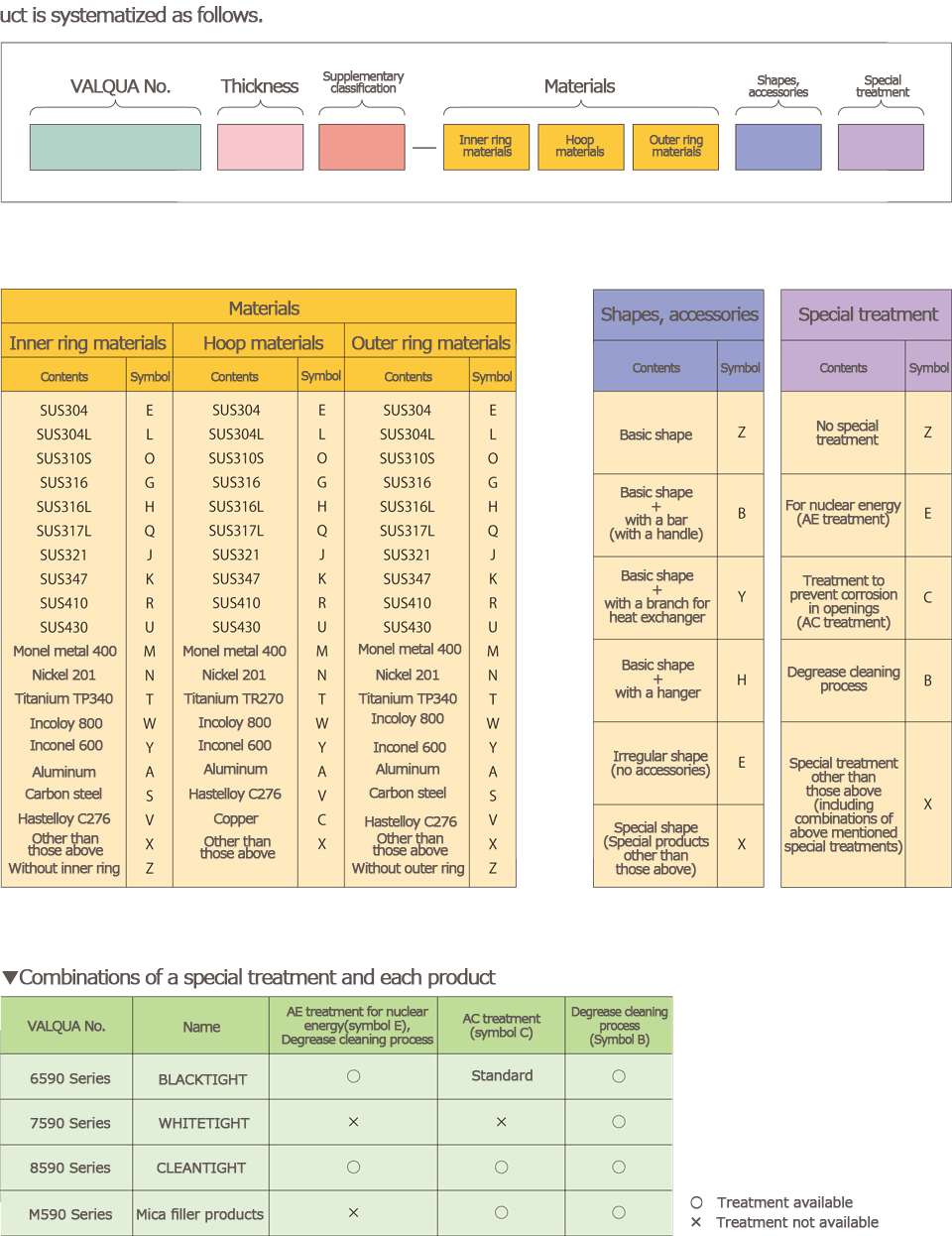VALQUATIGHT GASKET
Spiral Wound Gaskets use Non-Asbestos inorganic paper, VALQUAFOIL™ (expanded graphite) and VALFLON™ (PTFE) tape as filler materials, and exhibit good elasticity by means of a V-shaped hoop.
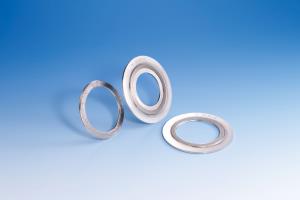
- VALQUA No.
- M596L
- Product name
- Spiral Wound Gaskets made of lined mica filler (with inner/outer ring)
- Features1
- Spiral Wound Gaskets made of expanded graphite filler, and clothless mica filler made by special manufacturing process has excellent sealability and remarkably improved heat resistance because of anti oxidation effect to expanded graphite by mica filler.
- Features2
- The outer ring of the gasket with an outer and inner rings is useful as a guide for adjusting the amount of reinforcement and tightening of the gasket, making gasket centering easy.
- Features3
- In addition, use of an inner ring prevents the inner diameter side of this gasket from deformation even if the gasket is tightened too much. For this reason, gaskets with inner and outer rings are the most reliable high-temperature/high-pressure gaskets that can be mounted on raised face flanges.
- Features4
- Temperature limit 750℃
- Applicable fluids
- Water, Sea water, Hot water, Steam,Crude oil, Alcohol, Animal & vegetable oil, Heat transfer oil,General solvent, Weak acid, Weak alkali,Strong oxidizing acid, strong alkali,Air, Nitrogen gas, Inert gas,Exhaust gas,Inflammable gas,Poisonous,Extremely low temperature liquids,
- Inappropriate fluid
- oxygen
- Application
- For super high temperature




